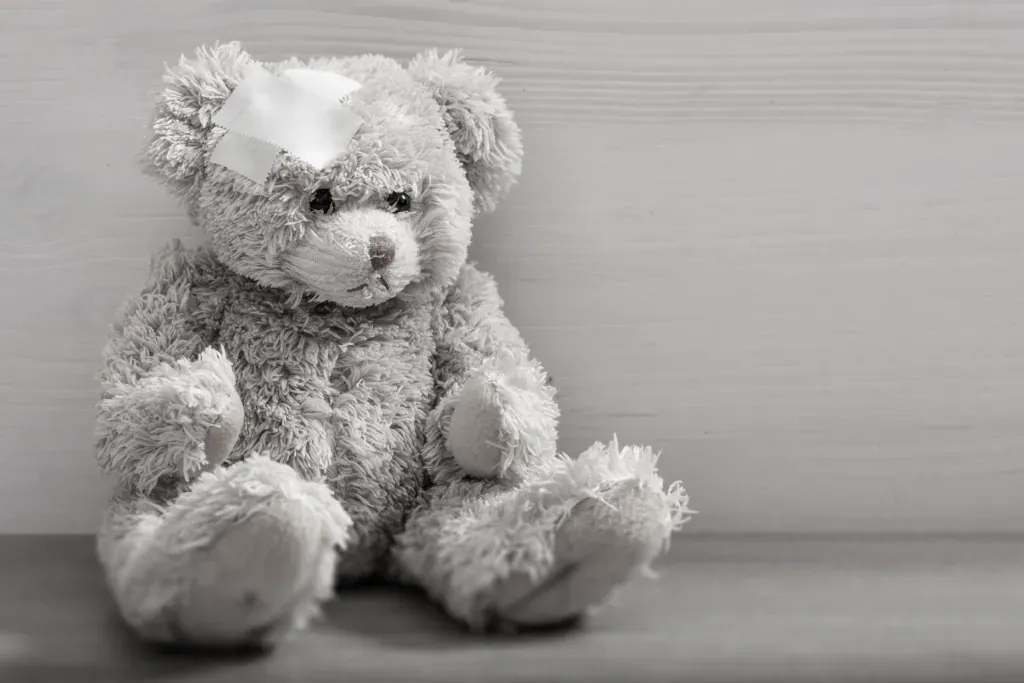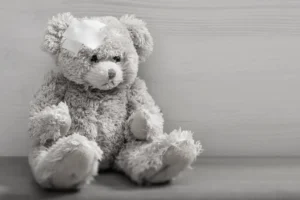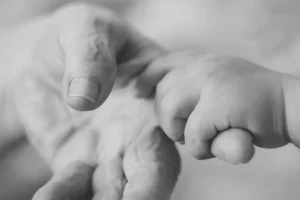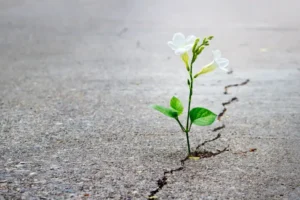What is developmental trauma?
Developmental Trauma are with trauma experienced during critical developmental phases, i.e. from early childhood until including teenage time and affecting the themes normally developed during these phases.
Developmental trauma comprises the effects of problematic social interactions with attachment figures and important other people. In these cases the child will usually try to find an adaptation, a compromise to maintain some dignity and maintain at least some level of connection to its caregivers.
- Examples for developmental trauma are the development of insecure-avoidant or insecure-ambivalent attachment styles. Other examples could be the Please-And-Appease strategy and overidentification with achievement or certain aspects of sexuality.
- Sometimes these emotional injuries are occurring despite the best intent of caregivers. An example would be if a child has to go to hospital – healing physical disease but separating it from its caregivers and thereby inflicting fear of abandonment in the child.
Developmental trauma can become problematic later in life, if these experiences leads to inflexible and repetitive behavioural patterns and personality styles.
Early childhood often does not carry explicit memories. Additionally, developmental trauma itself can be subtle – the person may not even know (s)he was traumatized or that interactions were not “normal” or “o.k”. This kind of unconscious trauma can have profounder effects on behavioural patterns and personality than visible shocks.
Severe adverse experiences during childhood / teenage time such as outright violence, sexualised violence, neglect, verbal or physical abuse fall in the area of shock trauma. These shock trauma may itself to PTSD. During childhood they have additional significant impact on development. Shock trauma in the presence of developmental trauma may create a complex interaction between shock and developmental trauma, which is commonly defined as Complex Post-traumatic stress disorder (Complex-PTSD), which goes beyond Developmental trauma.
Developmental wounds also have a strong cultural component – e.g. until the 1970s it was usual in many western countries to separate the child from the mother after birth, with the intention give rest to the mother. This practice deprived the baby of a positive attachment experience in the time directly after birth. In recent years the school experience of many children was interrupted by Covid-lock downs – depriving children of contact to their peer group in a developmental phase when contact to friends is crucial to develop skills to fit into larger society.
Whatever was missing or hurtful often remains outside consciousness and the child develops unconscious coping mechanisms to deal with the situation as best as possible.
Symptoms of Developmental Trauma
Recognizing the symptoms of Developmental Trauma is an essential step towards seeking healing and restoration. These symptoms may include:
- Repeating behavioural patterns resistant to change
“I would like to change my behaviour, but I cannot”. Such patterns are often the result of inflexible coping mechanisms. They were often developed for childhood situations which remain outside the conscious awareness. - Relationship and trust issues
Struggling to form and maintain healthy relationships, feeling detached or distant from others, attachment issues such as experiencing fear and anxiety in close connections, inability to trust others - Dysfunctional coping mechanisms / addictions
Engaging in self-destructive behaviors, including substance abuse, self-harm, or compulsive behaviors, as a way to cope with emotional pain. - Emotional dysregulation
Difficulty managing emotions, experiencing intense mood swings, and feeling overwhelmed by even minor stressors. - Challenges with self-esteem and identity
A need to compensate a perceived lack of self-worth. Lack of self-confidence, and a diminished sense of self. - Dysregulation of the body and the nervous system
Stress symptoms, i.e. overactivation or underactivation of the autonomic nervous system, such as high blood pressure sleeping difficulties, headaches, gastrointestinal issues, chronic pain, or other unspecific somatic complaints without a physiological cause. - A feeling of resignation of giving up
The person has given up to and resigned in the face of apparently inevitable adversity. This stance affects functioning with normal life challenges.
A typical expression of a subtle developmental trauma would be believe systems in the form of “this is how life is” or “this is how the world works”.
Working with Developmental Trauma
Often a first step in therapy is to recognise and bring into consciousness the actual developmental trauma and how it still affects life.
Naming the trauma
Naming the trauma is particularly important for the more subtle forms of developmental trauma. For the child – who does not know any different in early years – experiences are often perceived as “normal” , even if a third person could spot obvious dysfunctionalities. A typical sentence would be “everything was o.k. in my childhood” or “we were a normal family”, although a lot was anything but o.k.
Recognizing the effects of the trauma
Experiences during childhood can have a severe effect.
- Initially there may be disruptions in the following areas: Formation of secure attachment, forming a positive relation to the own body, the sensing of own needs and interests, decision making abilities, development of love and sexuality, forming of norms and values, orientation towards performance or group position.
- Later in life childhood and teenage experiences may have profound emotional and psychological consequences and lead to coping mechanisms and personality styles
What has been learned or not learned during childhood and what has been learned as a compensatory measure may work for some time. Later in life such coping mechanisms may stop working, become excessive or dysfunctional.
The effects of Developmental Trauma can manifest in various ways and impact an individual’s overall functioning and relationships.
Treatment with Body-Oriented Psychotherapy
Developmental Trauma related issues need a comprehensive and holistic approach – allowing for healing of wounds experienced, integrating the trauma and catching up with healthy development in daily life.
The Four Factors of Processing Developmental Trauma
- Learning to accept and consciously integrate coping patterns
Becoming conscious about one’s own behaviour and starting to accept to the good intensions behind it. Learning to use coping mechanisms and defences consciously. - Processing emotions and emotional compensation
Developmental injuries often carry deep shame, guilt, grief or anger. Often these difficult emotions are being compensated by other more acceptable emotions. These emotinal layers can be explored and processed during body psychotherapy. - Somatic processing and integrating traumatic memories
In addition to the developmental injuries there are often actual shock experiences. Techniques such as Somatic Experiencing can support the processing and integration of traumatic memories stored in the body. - Gradual relearning and repatterning of thougths and behaviours
Building body resources to develop important Ego Functions. Finding and practising better coping mechanisms and more functional behaviours. Integrating newly learned behaviours into daily life.
The Four Enablers for Personality Change
- Establishing safety and trust
Find a safe and non-judgmental space where you can explore your experiences and emotions at your own pace. This can happen in a trusting therapeutic relationship. - Enhancing self-awareness
By connecting with bodily sensations and engaging in mindfulness practices, you can develop a deeper understanding of your emotions, thoughts, and reactions, empowering you to make healthier choices. - Regulating the nervous system
Body-oriented techniques can help regulate the nervous system, allowing you to gradually release stored trauma energy and develop new patterns of resilience and self-regulation. - Strengthening attachment and relationships
We emphasise the importance of repairing attachment wounds. Developing secure connections in the present will promote healthier relationships and a greater sense of belonging.
Seeking therapy for Developmental Trauma can be a significant step on a journey towards understanding one’s life-story, self-discovery and personal growth.










